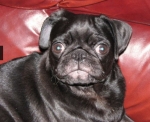Thank you for the replies.
I've had several ECGs over the last couple of months, most recently a week ago as part of a pre-assessment for a minor surgical procedure as it will require a general anaesthetic.
I don't know what the ejection fraction reading is or was, but I guess they would have flagged it up if there were any concerns and I have an appointment with the cardiologist next week. He will have the final say on whether the surgery can proceed, as it requires that they take me off the antiplatelet medication for a while.
Overall, I do take some comfort from the improving trend and have finally got an appointment to see the sleep specialist in January.
Apnea and heart attack
- littlebaddow
- Posts: 416
- Joined: Wed Dec 08, 2004 12:21 pm
- Location: Essex, England
- littlebaddow
- Posts: 416
- Joined: Wed Dec 08, 2004 12:21 pm
- Location: Essex, England
Re: Apnea and heart attack
Hello all
Quick update and a question. My recovery from heart attack is progressing ok and there has also been a gradual improvement in effectiveness of my apnea treatment. Whilst my AHI has not settled back to pre-attack levels (typically around 1) the range is now typically 2 to 10 with monthly average around 5.
I finally got to see the sleep specialist last week, who confirmed what I had learned here, i.e. the heart attack and continuing medication will be having an impact on my apnea treatment and he explained how and why. He also provided me with a new machine, an Airsense 10 which I've had for 4 nights.
That's where the question comes in. I appreciate it's very early and 4 days may not be a sufficient sample size, but the results show a different pattern. The AHI is not too different, but seems to be made up of different events. The obstructive events have almost completely disappeared, there are fewer hypos, but apparently many more centrals.
I assume the difference in algorithms may account for this and the disappearance of obstructive/reduction in hypos is obviously welcome.
I'm perturbed however by the increase in centrals. I will of course ask my sleep specialist, but wondered if anyone here can throw any light on why this may be?
Quick update and a question. My recovery from heart attack is progressing ok and there has also been a gradual improvement in effectiveness of my apnea treatment. Whilst my AHI has not settled back to pre-attack levels (typically around 1) the range is now typically 2 to 10 with monthly average around 5.
I finally got to see the sleep specialist last week, who confirmed what I had learned here, i.e. the heart attack and continuing medication will be having an impact on my apnea treatment and he explained how and why. He also provided me with a new machine, an Airsense 10 which I've had for 4 nights.
That's where the question comes in. I appreciate it's very early and 4 days may not be a sufficient sample size, but the results show a different pattern. The AHI is not too different, but seems to be made up of different events. The obstructive events have almost completely disappeared, there are fewer hypos, but apparently many more centrals.
I assume the difference in algorithms may account for this and the disappearance of obstructive/reduction in hypos is obviously welcome.
I'm perturbed however by the increase in centrals. I will of course ask my sleep specialist, but wondered if anyone here can throw any light on why this may be?
- Attachments
-
- Screenshot dec13.png (47.37 KiB) Viewed 331 times
Airsense 10 & Airfit N20
Re: Apnea and heart attack
I think the difference in number of centrals when the AHI overall numbers are essentially the same can be chalked up to the different ways the centrals are distinguished between obstructives.
ResMed's FOT that is used to distinguish categories is simply different from Respironics little pressure puffs way of distinguishing things.
As to which one is more apt to be "correct".....I don't have any way to actually know or test them to compare and I am not aware of any studies but I did ask a well respected sleep tech once if ResMed called it a central was it likely to be a central and he said "yes".
And I have seen Respironics reports where flagged OAs were obviously centrals and the person ended up with a diagnosis of central sleep apnea......so I lean towards ResMed's way of naming things as being more accurate when it comes to distinguishing centrals from obstructives.
ResMed's FOT that is used to distinguish categories is simply different from Respironics little pressure puffs way of distinguishing things.
As to which one is more apt to be "correct".....I don't have any way to actually know or test them to compare and I am not aware of any studies but I did ask a well respected sleep tech once if ResMed called it a central was it likely to be a central and he said "yes".
And I have seen Respironics reports where flagged OAs were obviously centrals and the person ended up with a diagnosis of central sleep apnea......so I lean towards ResMed's way of naming things as being more accurate when it comes to distinguishing centrals from obstructives.
_________________
| Machine: AirCurve™ 10 VAuto BiLevel Machine with HumidAir™ Heated Humidifier |
| Additional Comments: Mask Bleep Eclipse https://bleepsleep.com/the-eclipse/ |
I may have to RISE but I refuse to SHINE.











